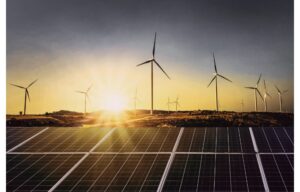- IRENA says new renewable energy installations since 2010 have helped the world save significantly in electricity fuel bills
- The global weighted-average LCOE of utility-scale solar PV has dropped by 89% between 2010 and 2022
- The agency demands the world to add 1 TW new renewables capacity annually until 2030, to keep 1.5°C within reach
The economic benefits of renewable energy are now compelling, especially due to the falling costs of solar and wind technologies, says the International Renewable Energy Agency (IRENA) attributing new installations since 2000 to have brought down electricity sector fuel bills by $521 billion in 2022, including $88 billion from solar PV.
While Asia saved $199 billion, Europe alone saved $176 billion. For Europe, the analysts believe the build-out of renewables since 2010 is likely to have saved the continent from a full-blown economic crisis as ‘in the absence of renewable power generation, the direct economic costs of the fossil fuel price hikes would have been much higher.’
These technologies proved their competitiveness especially during high fuel prices in 2021 and 2022, and despite an increase in equipment prices for solar modules and wind turbines. Along with direct cost savings, expansion of renewables also leads to economic benefits by reducing carbon emissions and local air pollutants.

In its new report Renewable Power Generation Costs In 2022, IRENA says out of 20 countries examined, 9 saw the competitiveness of their utility– scale solar PV improve by more than the global weighted-average levelized cost of electricity (LCOE) in 2021. In the ensuing year, 8 countries witnessed improvement.
The global weighted-average LCOE of utility-scale solar PV at $0.445/kWh was 710% more expensive than the cheapest fossil fuel-fired option, but it had reduced to $0.049/kWh by 2022, 29% lower than the cheapest fossil fuel-fired option.
Overall, this 89% decrease between 2010 and 2022 was primarily led by the decline in module prices.
Overall, between 2010 and 2022, 1,120 GW of renewable power generation with a lower LCOE than that of the weighted-average fossil fuel-fired LCOE by country/region was deployed, according to the report.
Going forward, analysts expect high fuel prices to cement the structural shift that has seen renewable power generation become the least-cost source of new generation.
“Today, the business case for renewables is compelling, but the world must add 1,000 GW of renewable power annually on average every year until 2030 to keep 1.5°C within reach, more than three times 2022 levels,” said IRENA Director-General Francesco La Camera.
The complete report can be downloaded from IRENA’s website.




